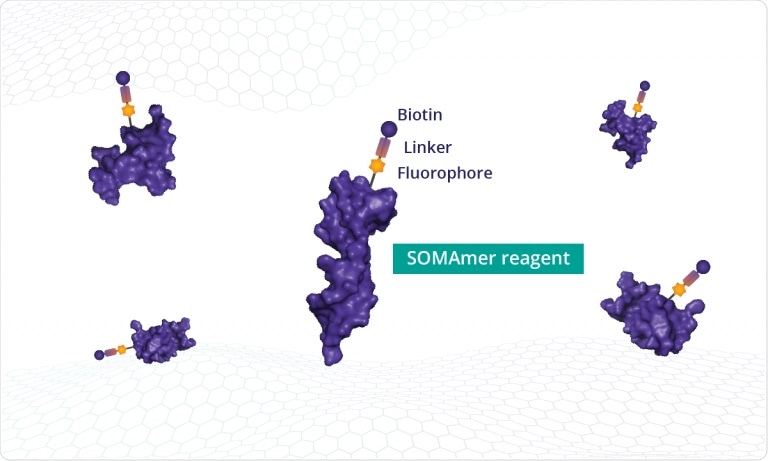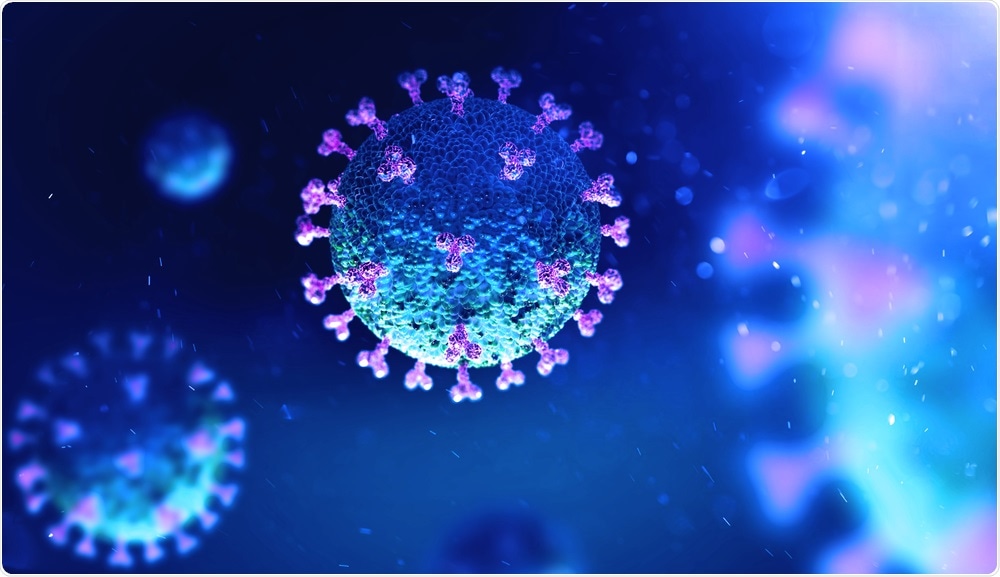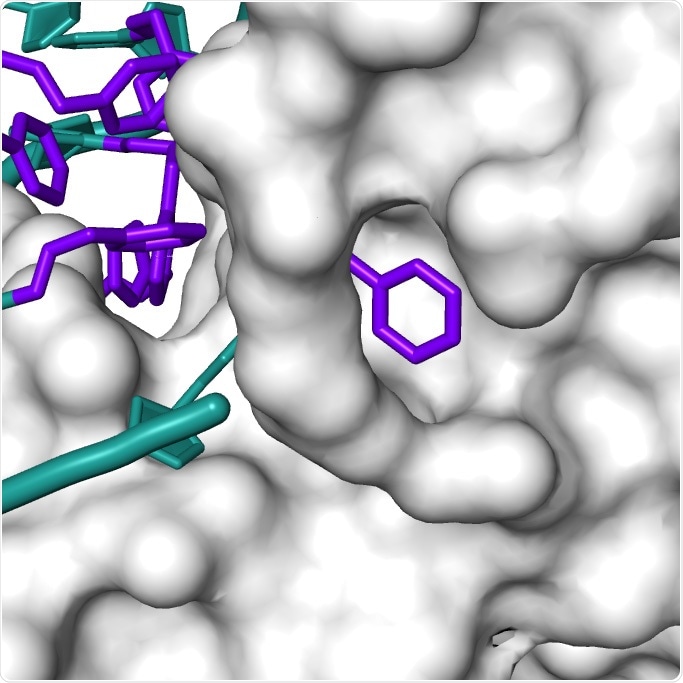Produced in Partnership with SomaLogicNov 4 2021
In this interview, we speak to Roy Smythe, CEO of SomaLogic, about their groundbreaking proteomics technology that can simultaneously measure 7,000 proteins.
Please could you introduce yourself, tell us about your role with SomaLogic, and what inspired your career into health, disease, and proteomics?
My name is Roy Smythe, and I am the chief executive officer at SomaLogic. As CEO, my goal is to accelerate SomaLogic’s mission, which is to facilitate biomedical discovery and transform clinical diagnostics by leveraging the power of proteomics.
The childhood experience of watching my mother battle, and eventually succumb to brain cancer motivated me to pursue medicine from a very young age. As a physician-scientist, I’ve always been interested in proteins as they are the molecules of life. So before I joined SomaLogic, I already understood the impact that proteomics could have in improving patient care and making healthcare accessible and more effective for everyone.
Proteomics plays a huge role within life sciences research and the healthcare sector, yet its full range of applications is still not fully understood by many organizations. Why is this and what more can be done to demonstrate the importance of proteomics to research?
Measuring a large percentage of the proteome and using information technology to understand the data has only been possible in the last few years. We’re only beginning to leverage our proteomic technology, so the full range of applications has not been explored or realized. We’re demonstrating the importance of proteomics to research via our collaborations with researchers around the world, and to the clinical practice of medicine right now through our first-in-class high plex protein diagnostic tests, especially in the cardiovascular space.
We will continue to show the value of proteomics via clinical trials and then work with clinicians to determine how best these advances in science can be translated into real-world clinical applications.

Image Credit: kentoh/Shutterstock.com
Your mission at SomaLogic is to create a world where everyone can routinely monitor their health as well as accurately diagnose, treat and prevent disease. Why is this mission so important to you and how are you trying to achieve it?
I’ve always thought that we should all be working to maximize the contribution that every human being makes to the world and other human beings. Health is certainly a big part of that—you need to be alive and well to make your best contribution.
At SomaLogic, we’re trying to help achieve that by creating new diagnostics based on high-plex proteomics that can be made available to everyone. Our hope is that this will facilitate the goal of providing each individual an opportunity to live the best life possible — for as long as possible.
You have stated that “we need to move precision health from rhetoric to reality” and have highlighted some of the problems concerning precision health. What are some of these problems and what solutions have SomaLogic developed to help tackle this issue?
One of the challenges has been a lack of accurate tools to deliver precision medicine. Precision medicine has largely focused on genomics but only about five to ten percent of diseases are driven by the genes you were born with.
Proteomics gives us a window into the other 90 to 95 percent of disease that’s not determined by genes alone. Proteomic health data is individualized, highly accurate, highly predictive, and highly actionable.
Your SomaScan Platform is also the first and only platform that can simultaneously measure 7,000 proteins. How did you develop this platform and how does it work?
Our SomaScan® Platform was developed over a 20-year period and was built on science discovered by the founder of SomaLogic, Larry Gold. Our protein-binding reagents are short, synthetic sequences of DNA that are modified with amino acid-like appendages. These “SOMAmer® reagents” bind tightly and specifically to protein targets and don’t have the cross-reactivity problems you have with antibodies. This is how we are able to measure thousands of proteins simultaneously in complex mixtures like blood.
The way our assay works is we add SOMAmer reagents to a blood sample, they bind specific protein targets, we remove any unbound proteins and SOMAmers, separate the proteins from the SOMAmers, and then read out the sequences of the SOMAmer reagents. This is how we turn a protein measurement problem (which is extremely hard) into a DNA measurement problem (which is much easier). Then we use machine learning tools to identify combinations of proteins associated with a particular disease or health condition.
For example, we’ve developed a protein pattern recognition test that can predict whether you are at risk of a heart attack or stroke over the next four years. The way we found the right combination of proteins was by measuring thousands of proteins at once and then using machine learning to tell us which ones were important.
We have a blood test that can diagnose nonalcoholic steatohepatitis (NASH) without doing a liver biopsy. We have tests that can measure your respiratory fitness and lean body mass, and we have tests to predict your biological risk of developing cancer or Alzheimer’s. All of these tests and many others have either been developed and are being evaluated by clinicians, or are currently in our pipeline.

Image Credit: SomaLogic
Typically, a protein assay measures, at most, only 10% of the human proteome. What are some of the advantages of having a platform that can measure this quantity of proteins simultaneously?
Having the largest protein menu is a significant advantage in biomarker discovery. Proteins don’t function in isolation; they function in complex networks. The more information you have on the network and the Achilles’ heel within the network, the more likely you are to find the proteins that can be targeted by drugs or vaccines.
In clinical diagnostics, measuring thousands of proteins simultaneously provides a networked signal from the body that allows you to diagnose or predict things that you couldn’t from a single protein measurement.
How can your technology be used to help provide health information to clinicians that can ultimately lead to better treatment decisions? What positive impact does this have on the patients?
We’ve created a new class of diagnostic tests. We measure thousands of proteins simultaneously and use machine learning to find and identify protein patterns that reflect disease or disease risk. These tests will allow clinicians to better understand not only a person’s current health but also their health trajectory. This information will also help clinicians focus their resources on the people who need them the most.
Even better, our tests are sensitive to changes in lifestyle or medications, which will help clinicians determine whether a treatment is working or if another treatment might be a better choice.
COVID-19’s diagnosis and prognosis have been at the forefront of research for over a year. How has SomaLogic gotten involved in the ongoing pandemic and how can your SomaScan Platform be used to help analyze COVID-19 samples?
Early in the pandemic, we realized that our proteomic technology could provide a deep understanding of changes happening in the body during SARS-CoV-2 infection, treatment, and recovery. To make our technology widely available to COVID-19 researchers, we established a specific area and procedures in our labs to process COVID-19 samples.
We also obtained a grant from the Gates Foundation to help fund projects with researchers interested in using proteomics to predict COVID-19 progression, identify complications, aid clinical trials, accelerate treatment development, and facilitate vaccine development and evaluation, and we processed thousands of COVID19 samples as a result.
As an example of the benefits of this work, one of our proteomic tests for predicting secondary cardiovascular risk appears to be a predictor of COVID severity and may help identify the course of long haul COVID.

Image Credit: Andrii Vodolazhskyi/Shutterstock.com
What more can individuals, organizations, and policymakers be doing to help ensure a healthier world?
The most pressing need for the world is access to healthcare of any sort, as about half of the world’s population is either underserved or has no real access at all. In the developed world, we need to find more efficient ways to deliver healthcare. We spend about five trillion dollars to fund healthcare efforts around the world and as much of that is wasted.
Policymakers need to encourage prevention and actual “health” by providing incentives for these things, in addition to incentivizing acute care. If this can be accomplished, the money that is saved in the medically developed world can be redeployed to facilitate more uniform access.
One of the other many interesting things about SomaLogic is your company logo. Please could you tell us a little more about its design?
The “S” shaped zigzag of the SomaLogic logomark references the company’s name and also represents part of an “alpha helix,” a structural feature found in most proteins. The overall hexagonal shape of the logomark is inspired by the first solved crystal structure of a SOMAmer reagent bound to its target protein, in which a hexagonal “benzyl group” of a SOMAmer reagent inserted into a protein pocket.

Image Credit: SomaLogic
What do you see the role of proteomics within healthcare and disease to be within the next 10 years?
By revealing more about disease biology, I think proteomics will drive a renaissance in the development of new drugs and vaccines that are highly effective.
I think policymakers and payers will see that proteomics-based diagnostics deliver accurate health information, and they will be increasingly willing to fund them and encourage their use.
What are the next steps for SomaLogic within the proteomic space?
We are increasing our assay content as quickly as possible, moving from measuring 7,000 proteins to 10,000 simultaneously. We will be diversifying the range of life science tools we provide, particularly in analytics.
On the diagnostics side, we will continue to develop our Proteomics for Precision Medicine Initiative, which is a partnership effort with healthcare systems aimed at equipping providers with proteomic tests to inform decisions at the point of care. The future is very bright for proteomics in general, and we are at the leading edge of this future at SomaLogic.
Where can readers find more information?
You can find out more about us at our website: www.somalogic.com
About Roy Smythe
Roy Smythe, M.D., joined SomaLogic in November 2018 as Chief Executive Officer. Dr. Smythe is an internationally recognized surgeon, biomedical scientist, academician, health system administrator, and healthcare business entrepreneur..jpg)
Prior to SomaLogic, Dr. Smythe served as Global Chief Medical Officer for Strategy and Partnerships at Royal Philips. Before joining Philips, he served as Chief Medical Officer at Valence Health, a Chicago-based healthcare company. He held the same title previously at AVIA, a healthcare technology accelerator.
Dr. Smythe’s medical and translational research career began at the University of Texas MD Anderson Cancer Center. He subsequently chaired the Department of Surgery at Baylor Scott & White Health System and the Texas A&M Health Science Center College of Medicine, where he was the Roney Endowed Chair, and later became the Medical Director of Innovation and Executive Vice President for Institute Development before moving into expanded roles in corporate healthcare.
While in medical school at Texas A&M, he was a Charles A. Dana Foundation Scholar at the University of Pennsylvania School of Medicine and the Wharton School of Business. Following medical school, he trained in general surgery, surgical oncology, and thoracic surgery and completed a postdoctoral research fellowship in molecular therapeutics at the University of Pennsylvania.